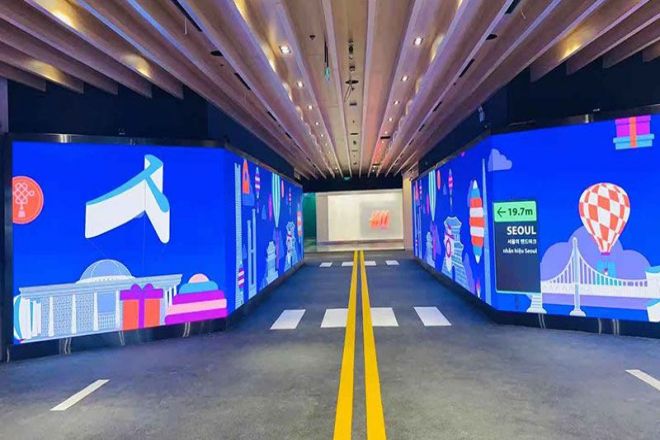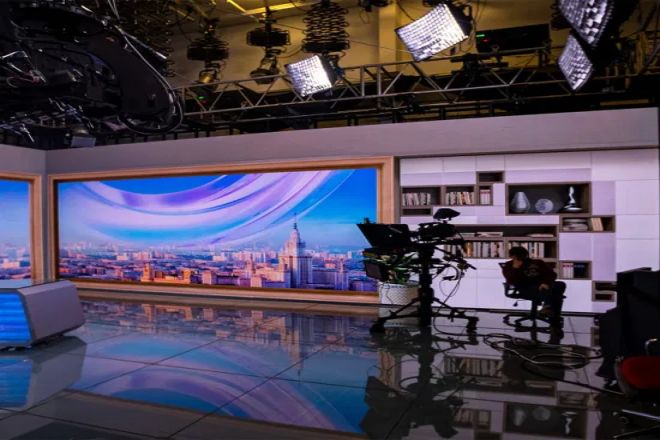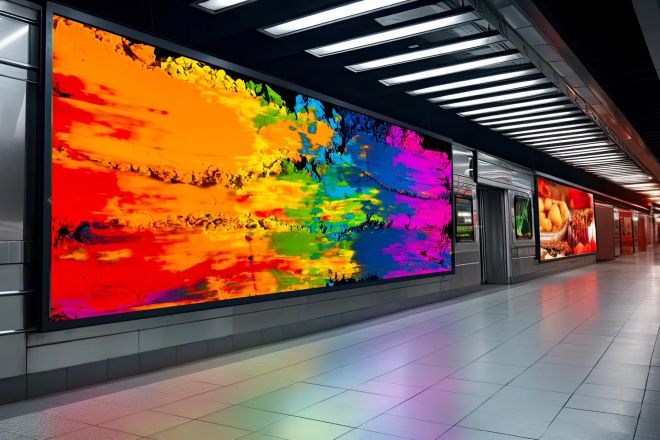Introduction

With the rapid development of science and technology, LED display screens have become an indispensable part of modern society.
Whether in commercial advertisements, sports events, or urban landscapes, LED displays have attracted the attention of countless people with their unique charm and wide range of application scenarios. However, in this era of high reliance on display technology, the stability of LED displays is particularly important.
Stability is not only related to the accurate transmission of information and the comfort of user experience but is also a key factor in determining the service life and cost-effectiveness of the display.
1. The definition and importance of LED display stability
The stability of the LED display not only refers to its ability to continue to work normally after a long period of operation but also includes its ability to continuously and stably output high quality under various complex environmental conditions (such as high temperature, low temperature, humidity, dryness, vibration, etc.)
Quality picture. This stability includes hardware stability and software stability. Hardware stability is mainly reflected in the life and reliability of core components such as LED lamp beads, drive circuits, and power modules, while software stability is reflected in the stability and reliability of control systems, data transmission, image processing, etc.
1). The importance of LED display stability:
- Ensure the accurate transmission of information:
As a medium for information dissemination, the stability of LED display screens is directly related to the accurate transmission of information. If the display fails or the display effect is poor at critical moments, it may mislead the audience and cause unnecessary misunderstandings or losses.
- Improve user experience:
With the development of technology, people have higher and higher requirements for visual experience. As an important tool for visual display, the stability of the LED display screen directly affects the audience’s viewing experience. The stable display screen can continuously output high-quality images, allowing viewers to feel comfortable and happy while enjoying them.
- Extend the service life of the display:
LED displays with good stability can continue to operate stably under various environmental conditions, reducing downtime caused by failures, and thereby extending the service life of the display. This can not only reduce user maintenance costs but also improve user satisfaction with the product.
- Improve return on investment:
Although the initial investment in purchasing a high-quality LED display is relatively large, due to its advantages such as good stability, long service life, and low maintenance costs, it can bring users a higher return on investment in the long run.
- Adapt to complex environments:
The stability of LED displays used outdoors or in harsh environments is particularly important. Because these environments may cause various adverse effects on the display screen, such as high temperature, low temperature, humidity, vibration, etc, only displays with good stability can adapt to these complex environments and ensure the normal dissemination of information.
2. Key factors affecting the stability of LED display

Indeed, the stability of LED displays is affected by many factors. The following are the key factors affecting the stability of LED displays:
1). Hardware Quality
- LED lamp bead quality:
LED lamp beads are the core component of the display screen, and their quality directly affects the stability and display effect of the display screen. Brightness, lifespan, color consistency, etc. are all important indicators to measure the quality of LED lamp beads.
High-quality LED lamp beads have the characteristics of high brightness, long life, and good color consistency, which can ensure that the display screen still maintains good display effects after long-term operation.
- Driving circuit:
The stability, efficiency, and heat dissipation performance of the driving circuit also have an important impact on the stability of the display. A stable drive circuit can ensure the normal operation of the display and avoid problems such as crashes and freezes.
An efficient drive circuit can reduce the energy consumption of the display and improve the display effect; good heat dissipation performance can reduce the temperature of the display and improve stability.
- Cabinet structure:
The sturdiness, protection level, and heat dissipation design of the cabinet structure are also important factors that affect the stability of the display. The solid box structure can protect the display from external impact and damage; the high-protection-level box can resist external intrusions such as dust and water droplets; and reasonable heat dissipation design can reduce the temperature of the display and improve stability.
2). Software design
- Control system stability:
The stability of the control system is the basis for ensuring the normal operation of the display screen. A stable control system can avoid problems such as crashes and freezes and ensure that the display can work normally in various environments.
- Content playback software:
The compatibility and update iteration capabilities of content playback software are also important factors that affect the stability of the display. Content playback software with good compatibility can support playback content in multiple formats to ensure that all kinds of content can be displayed normally; at the same time, software with the ability to update and iterate can continuously optimize performance and improve stability.
3). Environmental factor
- Temperature:
Temperatures that are too high or too low can affect display performance. High temperature may cause damage to the internal components of the display or accelerate aging, and low temperature may cause difficulty in starting the display or abnormal display.
Therefore, it is necessary to select a display with an appropriate temperature adaptation range according to the environment in which it is used.
- Humidity:
A humid environment can easily cause damage or short circuits to electronic components, thus affecting the stability of the display. Therefore, you need to choose a display with a moisture-proof function or take appropriate moisture-proof measures.
- Electromagnetic interference:
Electromagnetic interference may cause the display to flicker, distort, etc., affecting the display effect and stability. Therefore, it is necessary to choose a display screen with anti-electromagnetic interference capabilities or take appropriate shielding measures.
3. Strategies to improve the stability of LED displays
- Choose high-quality hardware:
Ensure that the LED lamp beads have excellent brightness, lifespan, and color consistency, which helps keep the display running stable for a long time and reduces the failure rate.
Choose a drive circuit with high stability and efficiency to ensure that the display can continue to work stably and reduce energy consumption.
Pay attention to the sturdiness and heat dissipation design of the box structure to protect the display from external impact and damage and reduce the temperature during operation.
- Optimize software design:
Improve the stability of the control system, avoid problems such as crashes and freezes, and ensure that the display screen can work normally in various environments.
Enhance the compatibility of content playback software, support playback content in multiple formats, and ensure that all kinds of content can be displayed normally.
The software is regularly updated to fix potential issues, enhance functionality, and improve overall stability.
- Enhanced heat dissipation design:
Use efficient heat dissipation technologies and materials, such as heat pipes, cooling fans, etc., to reduce the temperature of the display when it is running.
Optimize the heat dissipation layout and ventilation design to ensure that heat can be dissipated quickly and improve the stability and reliability of the display.
- Regular maintenance and upkeep:
Clean dust and dirt from your display regularly to maintain its clarity and brightness.
Check whether the connecting lines and interfaces are loose or damaged and repair them in time to ensure that the display is working properly.
Regularly perform performance testing and calibration on the display to ensure that its display effect and stability meet requirements.
- Coping with environmental factors:
Install appropriate protective measures, such as awnings, waterproof covers, etc., to reduce the impact of direct sunlight, rain, and other natural factors on the display.
Use waterproof and dustproof materials to encapsulate the display to improve its water and dust resistance.
When selecting the installation location, try to avoid unfavorable environments such as high humidity, high temperature, or strong electromagnetic interference to reduce the impact of environmental factors on the display.
4. How do you choose an LED display with high stability when purchasing?

When purchasing an LED display, in order to choose a product with high stability, you can consider the following key aspects:
- Brand and manufacturer reputation:
Choose brands and manufacturers with good reputations and years of production experience. They usually have more mature production processes and stricter quality control processes.
- Hardware quality and configuration:
Learn more about the quality of LED lamp beads, including key parameters such as brightness, lifespan, and color consistency.
Ask about the stability, efficiency, and thermal performance of the driver circuit.
Check the sturdiness of the box structure, protection level, and thermal design to ensure that the display can withstand various environmental conditions.
- Software system and compatibility:
Ask about the stability and functionality of the control system to ensure it meets your needs and has the ability to be updated.
Check the compatibility of your content playback software to make sure it supports your common file formats and playback needs.
- Thermal design:
Ask to see the details of the thermal design, including the layout and specifications of cooling fans, heat sinks, and other components.
Understand the operating temperature range of the display to ensure that it will operate stably in your environment.
- Environmental and protective measures:
Understand whether the display screen has protective measures such as waterproof, dustproof, and anti-corrosion to adapt to different usage environments.
If installed outdoors or in harsh environments, ensure that the display has adequate protection levels and adaptability.
- After-sales service and technical support:
Understand the after-sales service and technical support policies provided by the manufacturer, including warranty period, repair response time, and technical support methods.
Choose a manufacturer that offers comprehensive, timely, and professional after-sales service so you can get help and support when you need it.
- User reviews and cases:
Read reviews and stories from other users to get their feedback on product stability and experience.
Refer to cases in similar usage scenarios to evaluate whether the product is suitable for your needs.
- Sample testing and field visits:
If possible, ask the manufacturer to provide samples for testing to evaluate the actual performance and stability of the product.
On-site inspections of manufacturers’ production bases and display centers are performed to understand their production processes, quality control, and after-sales services.
Conclusion
Through an in-depth discussion of the stability of LED displays, it is not difficult to find that stability is a key factor in ensuring long-term stable operation of the display and providing a high-quality user experience. From hardware quality, software design to environmental factors and other aspects, we need to carry out comprehensive consideration and detailed control.
Finally, if you want to know more about LED displays, please get in touch with us.
